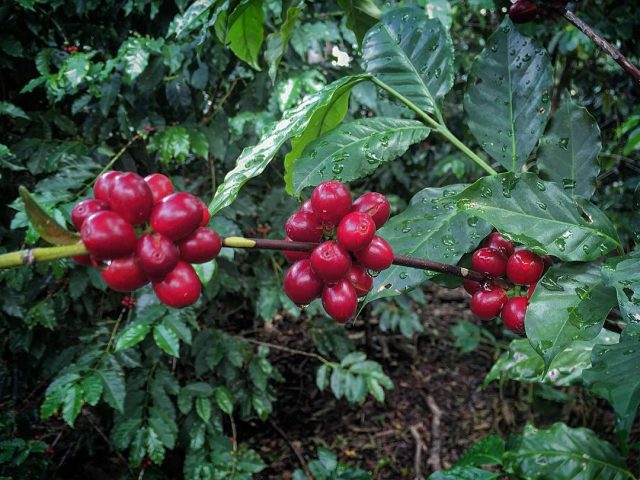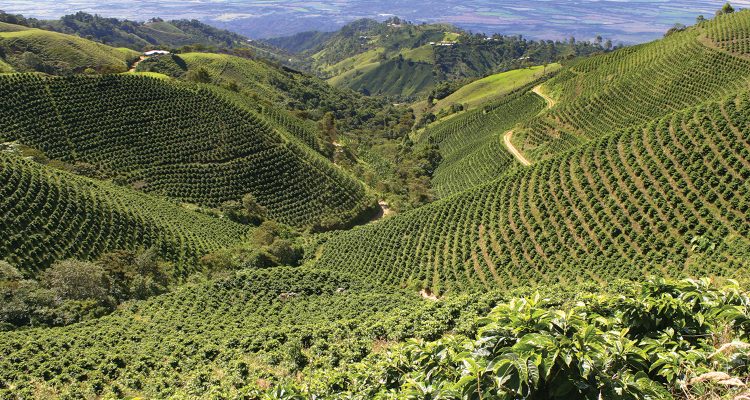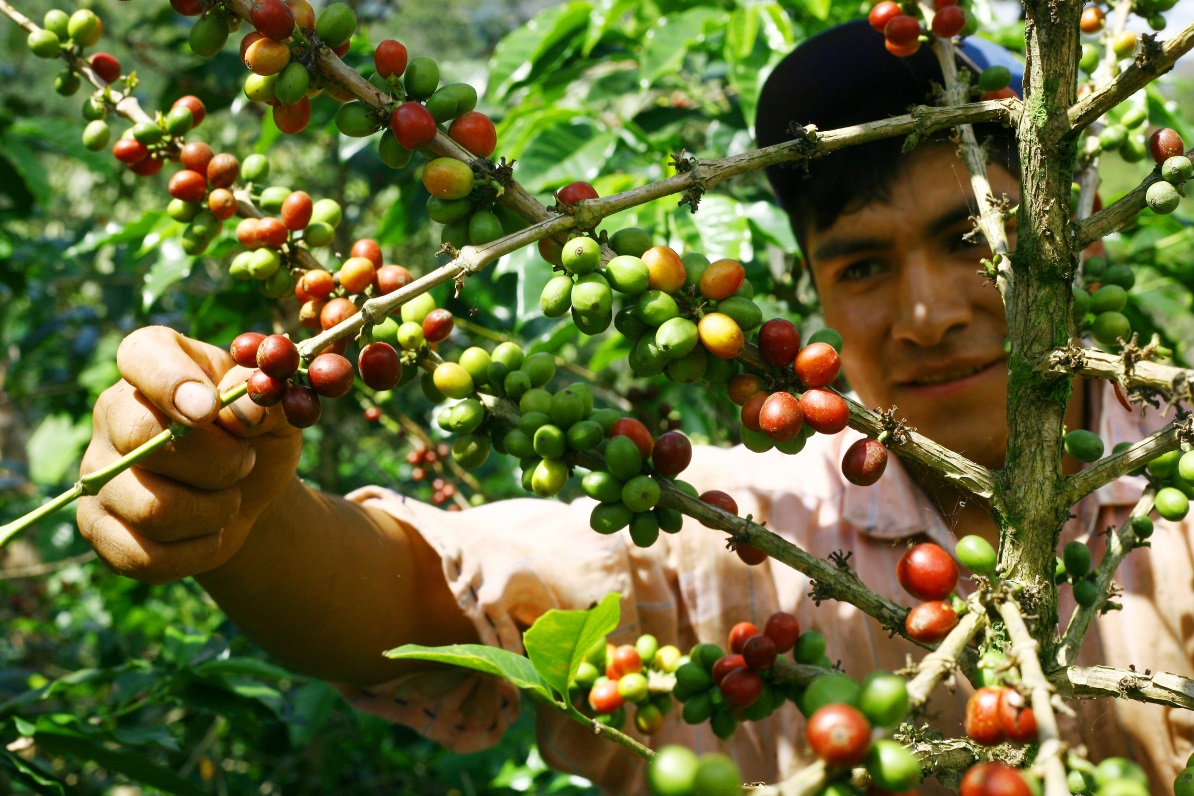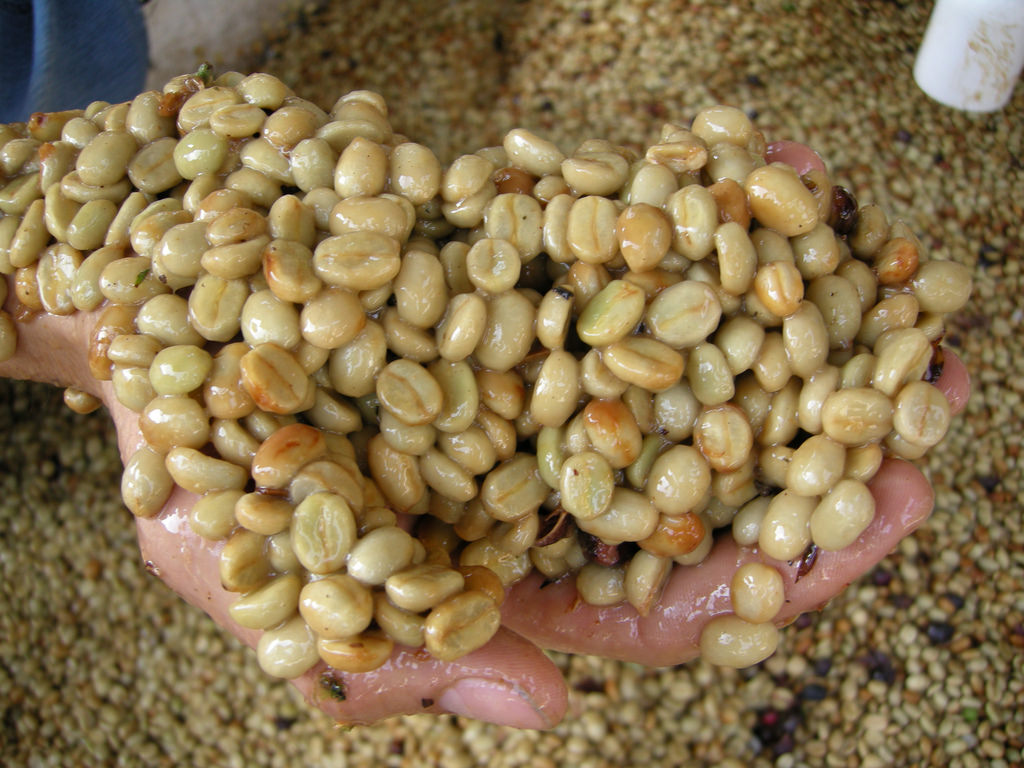Crema Trekkers: Exploring Peru SHB Organic Coffee
- 23 Mar 2018

PERU COFFEE BEANS
Our latest single origin coffee beans were grown all across Peru and are from a range of varietals, including Bourbon, Pache and Caturra. Grown at an altitude of approximately 1,100-1,3000m above sea level, these beans are SHB “strictly hard bean” rated and are processed using a fully washed method, then sundried.
Bourbon is a parent to a variety of Arabica varieties, named after Bourbon Island (now known as Reunion Island) where it is derived from. It’s a short tree with many secondary branches and on average produces 25% more coffee than the Typica variety. The Bourbon variety is renowned for its exceptional sweet/acid balance, and is considered by many producers and roasters to be a classic everyday drinking coffee.
Pache is a natural mutation of the Typica variety that was discovered in Guatemala in 1949. It is a dwarf species, allowing it to be planted more densely and achieve higher yields, and is best grown at higher altitudes – around 1,400m above sea level. It is also well suited to region with lower annual rainfall, which makes it a great option for many of the small farm holders in Peru, although it is quite susceptible to CBD, leaf rust and nematodes.
Caturra is a natural mutation of the Bourbon varietal, originally found in Caturra, Brazil. It grows well at higher altitudes and produces a larger yield due to the fact that is short with a thick core, and plenty of secondary branches. Another reason for its higher yield rate is that the tree is naturally disease resistant. The higher altitudes produce better quality, but production rate lowers. The quality of the Caturra increases with altitude, but can lower the production.
Peru coffee is starting to build a reputation for quality as their systems for exporting are starting to become more organised. This light coffee has more subtle flavours, and we recommend drinking it as an espresso, long black, small milk coffee or plunger.
Tasting Notes: The soft body and low acidity make this an easy drinking coffee with a nutty fragrance. The aroma is floral with hints of cereal and the flavour notes include cereal, hazelnut and cocoa with a buttery mouthfeel.


COFFEE PRODUCTION AND PROCESSES IN PERU
The Peru SHB Organic single origin is sourced from all across the country, including the North, Central and Southern regions. It can be difficult to trace the source of the beans back to an exact farm, as many of the farmers are Indigenous people who usually farm on two to three hectares of land, hours away from their closest city or town.
This particular coffee is rated SHB which is a reference for "strictly hard bean (SHB)" and usually refers to coffee grown at higher altitudes, about 4,500 feet above sea level. Beans grown at high altitudes tend to mature more slowly and grow to be harder and denser than beans grown at lower elevations. The inherent consistency and taste attributes of high grown beans makes them more desirable, and generally more expensive, than coffees grown at lower elevations.
The Peru single origin is also Rainforest Alliance and NASAA Organic Certified. Most Peru farmers produce traditionally cultivated, shade grown coffee and are processed in micro-wet-milling operations, which protect Peru’s water sources from becoming polluted by pulping factories. This careful handling of their beans at every stage of cultivation, the harvest and processing creates the quality, organically grown coffee that Peru is becoming known for.
Once the washed process is complete and the beans have completely sundried, they are transported still in their parchment to the nearest town or city to sell their goods and purchases essentials and provisions to take back with them. It is quite common for only one buyer to show up at these buying/selling plazas, which unfortunately forces farmers to drastically decrease the cost of the coffee, as most do not have any storage facilities for unsold stock.
Many of the smaller farms mix and trade their beans before they reach these plazas, which makes tracing their origins extremely difficult. This unorganised system also makes it difficult for farmers to get good prices for their product, as well as estranges them from the end result that would help them focus on creating a higher quality product. However, over the past decade, these small farm holders have organised themselves into cooperatives to protect farmers from common exploitative practices. It’s estimated that between 15-25% of Peru’s 110,000 small farm holders now belong to a cooperative and these organizations are now linking with Fairtrade and organic networks to stimulate growth and quality production. Direct market access has also been a boon to many small holders who can sell directly to market using the organization of their cooperatives. While the situation in Peru’s coffee production systems do not meet the needs of the farmers in terms of wages and living/working conditions quite yet, it is a situation that is getting better with grassroots and not-for-profit organization.

THE GREEN BEAN PROCESS
The Peru SHB Organic single origin is processed using a fully washed process. The washed process relies on every stage of the growing, harvest and fermentation process being right, as the flavour is totally reliant on the bean having absorbed enough nutrients and sugars while growing.
The process begins by de-pulping the coffee cherries and leaving the mucilage intact for fermentation. The fermentation process can take anywhere between 1-4 days, giving the bacteria present in the fermentation tank time to break down the mucilage which is then ‘washed’ off at the end of the fermentation period. Once the mucilage has been removed the coffee is carefully sun-dried. Most Peru farmers don’t have any space for storage, so they tend to keep the beans in their parchment and then travel – usually by foot – to the local city or town once a week to sell their stock.


PERU SHB ORGANICCOFFEE CERTIFICATIONS
Rainforest Alliance Certified
The Rainforest Alliance is an international not-for-profit organization that has been working on the front lines of sustainable food production for the past 30 years. They work with coffee farmers to improve their livelihoods and the well-being of the rural communities that are often at the heart of coffee production. Coffee farms or small holder groups that earn this certification are audited every year to make sure they are keeping with highly detailed environmental, social and economic criteria. This criteria was established to protect natural biodiversity, secure financial benefits for farmers and establish a respectful culture for workers and their communities. Part of this requires looking at the living and working conditions of workers, wages earned, gender equity on site, and access to education within rural communities.
NASAA Organic Certified
The National Association for Sustainable Agriculture Australia is was established in 1986 and supports the education of industry and consumers regarding organic, biodynamic and sustainable agricultural practices. The association covers the full supply chain, from manufacturers and producers to wholesale and retail operations, to ensure the organic integrity of products.
Image Sources:
https://www.perfectdailygrind.com/2017/08/geisha-vs-bourbon-crash-course-coffee-varieties/
https://practicalaction.org/blog/category/where-we-work/peru/
http://www.mikocoffee.com/uk/drop-peru-coffee-production/
https://taynguyen.vn/tay-nguyen-24h/so-sanh-ca-phe-che-bien-kho-va-che-bien-uot-664.html




